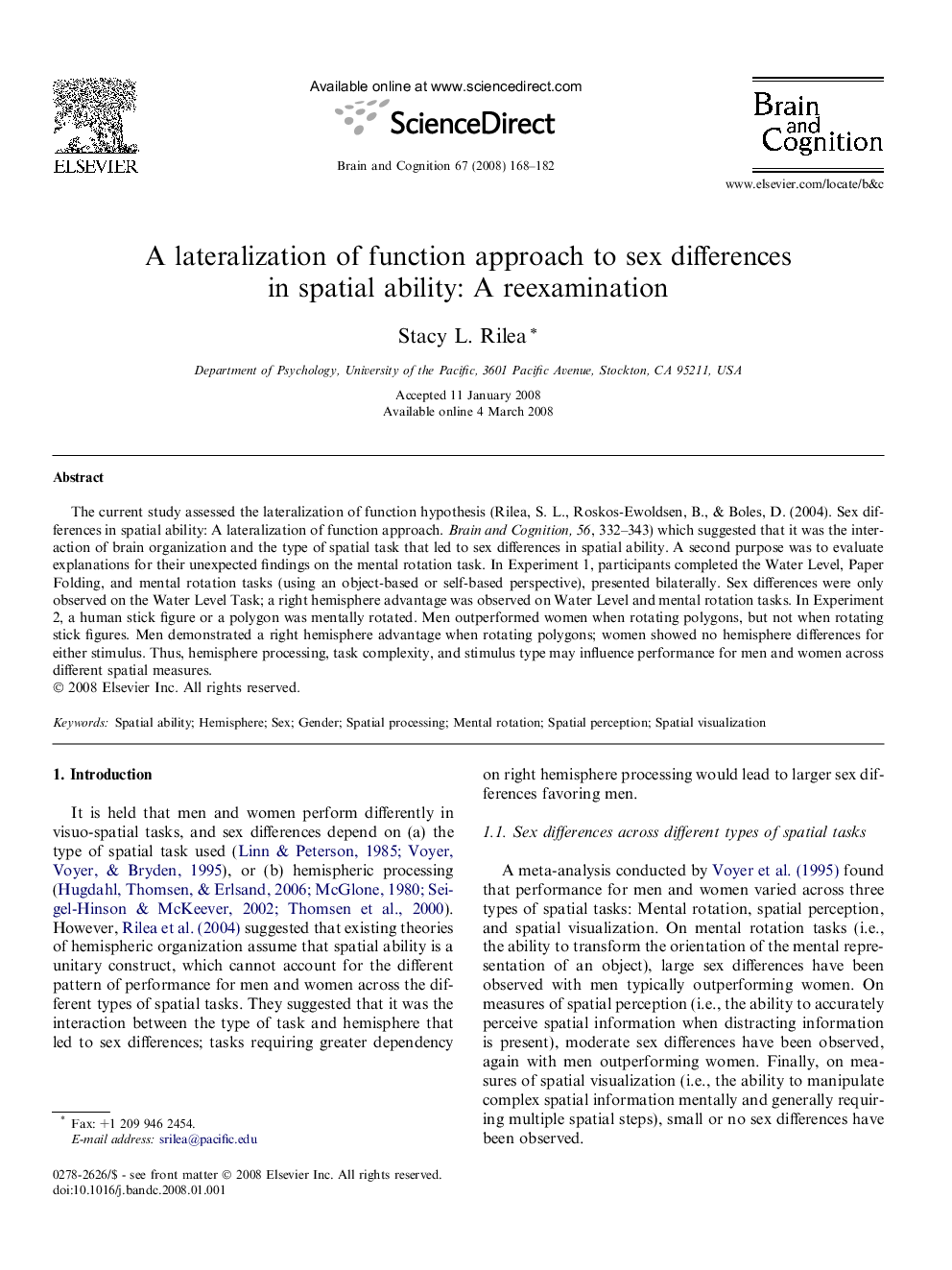| کد مقاله | کد نشریه | سال انتشار | مقاله انگلیسی | نسخه تمام متن |
|---|---|---|---|---|
| 924895 | 921288 | 2008 | 15 صفحه PDF | دانلود رایگان |

The current study assessed the lateralization of function hypothesis (Rilea, S. L., Roskos-Ewoldsen, B., & Boles, D. (2004). Sex differences in spatial ability: A lateralization of function approach. Brain and Cognition, 56, 332–343) which suggested that it was the interaction of brain organization and the type of spatial task that led to sex differences in spatial ability. A second purpose was to evaluate explanations for their unexpected findings on the mental rotation task. In Experiment 1, participants completed the Water Level, Paper Folding, and mental rotation tasks (using an object-based or self-based perspective), presented bilaterally. Sex differences were only observed on the Water Level Task; a right hemisphere advantage was observed on Water Level and mental rotation tasks. In Experiment 2, a human stick figure or a polygon was mentally rotated. Men outperformed women when rotating polygons, but not when rotating stick figures. Men demonstrated a right hemisphere advantage when rotating polygons; women showed no hemisphere differences for either stimulus. Thus, hemisphere processing, task complexity, and stimulus type may influence performance for men and women across different spatial measures.
Journal: Brain and Cognition - Volume 67, Issue 2, July 2008, Pages 168–182